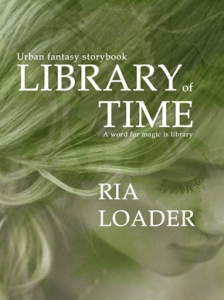 One of the sites visited by our protagonist Mira Abrose Argent in Library of Time was Norman’s Pool at the Norman Lindsay Gallery. It is an amazing place all on its own and I wanted to share a little more about the location. It is the former home of artist Norman Lindsay, a multi-talented Australian artist.
One of the sites visited by our protagonist Mira Abrose Argent in Library of Time was Norman’s Pool at the Norman Lindsay Gallery. It is an amazing place all on its own and I wanted to share a little more about the location. It is the former home of artist Norman Lindsay, a multi-talented Australian artist.
When I lived in Sydney, I visited the gallery every couple of years. It is one of those places that rekindles a sense of wonder and child-like enjoyment. Norman’s talent ran all the way from illustrating children’s books, writing novels, model ship building, painting in oil and watercolor, sculpting and sketching. His lithographs are multi-layered exemplars of the art. His work was one of the reasons I studied print-making in art school; I wanted to experiment with the techniques he pioneered. It ought to be noted that it was his wife, Rose Lindsay, who did most of the print runs. She was pretty amazing as a person, a model and an artist.
 However, it is the grounds of the place that are the most evocative to the would-be artist. Life-sized statues of nymphs, fauns and satyrs romp through the grounds, sculpted hastily from chicken wire and concrete that seems to linger on beyond their ephemeral materials; their sly smiles and sidewise glances provoke smiles from the visitors to the gallery. It is clear that the spirits that the artist saw animating nature did not remain elusive to his maker’s hands.
However, it is the grounds of the place that are the most evocative to the would-be artist. Life-sized statues of nymphs, fauns and satyrs romp through the grounds, sculpted hastily from chicken wire and concrete that seems to linger on beyond their ephemeral materials; their sly smiles and sidewise glances provoke smiles from the visitors to the gallery. It is clear that the spirits that the artist saw animating nature did not remain elusive to his maker’s hands.
An Artist is a kind of magician I’ve always thought, making something from nothing and giving the viewer a sense of connection with what the artist sees of the numinous or hidden world of spirit.
Vision and the sight are recurring themes in the current set of novels. What happens if you look too deeply and see too much? How can true sight be a gift and a burden at the same time? Does knowledge equal power, or does it show too clearly the hidden cost of wielding magical power and mundane power in the world. All good food for thought, and Norman Lindsay saw and revealed many hypocritical attitudes in the early half of the twentieth century. His clear vision got him into a different kind of trouble than my characters experience, however, it was fun to add the place to the story. It stars as a meeting place where almost anyone or any otherworldly being might just drop by for a visit.

I remember the place fondly for the art, the statues, and for the half-glimpsed view of the world of the artist who lived there. It is a place that has inspired more than one artist and author over the years and I am pleased count myself among them.
If you caught the film ‘Sirens’ a while back, that is set in the same location. It stars Ella McPherson, Hugh Grant and Sam Neil. It may not be a spectacularly good bio-pic but it does the grounds and the mores of the time justice. A fun romp of a movie, it is quite naughty in juxtaposing the bohemian ways of the artist and the models with the more straight-laced morals of the preacher who thinks himself rather ‘modern’ in his views. It is a quirky send-up, though fairly gentle in its humor. I found it charming.
As a place, Norman’s pool is now empty of water for most of the year; you’ll have to imagine what it would have been like with water lilies. In the hot Australian summer, it would have been a favorite place to get some relief from the heat. The surrounding bush is beautiful, resinous and fragrant with Eucalyptus. The surrounding walks are private and a little wild and the calls of the birds could be the laughter of women or dryads calling from the bush. Quite a magical place, and a great day-trip from Sydney. I recommend it highly.
-33.691874
150.545824






